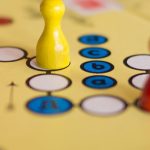The Mobile Mathematician: Math Apps to Multiply Success
How can math apps help learners multiply success?
It is not new knowledge that math is a hot topic in the 21st century. School boards have put forth great effort through professional development and curriculum resources to shift the direction and purpose of math education. When designing any lesson based on the curriculum, educators need to consider content knowledge, building, thinking, communicating, and applying knowledge. Over the past century, mathematics education has focused heavily on content knowledge building through rote learning practice. Learners then apply this knowledge through worksheets or standardized tests. Educators have exposed learners to math manipulatives for a long time, but these learning tools only supported learners’ success with standardized tests.
Mathematical Thinking and Communication Skills
Of course, math content knowledge and application have their place in learning and are important for learners to be successful. You can consider this knowledge as a building block towards high-order thinking. However, in the 21st century, the education system is seeing a dynamic shift from rote learning practices and tests to recognizing, encouraging, valuing, and assessing learners’ mathematical thinking and communication skills. With an importance placed on thinking and communicating, math in the 21st-century classroom looks a lot different. Educators are now encouraged to focus on learners’ development of new knowledge in math. This knowledge is not necessarily new to everyone. However, it is specifically a new understanding of math for the learner that developed it.
Tweet, “We should focus on learners’ construction of knowledge instead of just the consumption of knowledge.”
Problem-Based Learning
Educators are now implementing more inquiry-, project-, and problem-based instructional methods to support learners’ knowledge instead of just focusing on the consumption of knowledge. Problem-based learning seems to be one of the more prominent choices for collaborative mathematics instruction. It begins with educators posing a question or problem that learners then work in pairs or small groups to solve. Problem-based mathematics aims for learners to construct their own methods and strategies for solving problems. It leads to new knowledge within the group. After learners develop strategies to solve the problem, educators usually hold a whole class congress. Learners share and compare their different strategies and discuss ways to improve each other’s strategies.
As you can probably see, mathematics education focuses more on the learning process than the product. Educators assess learners throughout their math strategy development and large group explanations. While this type of mathematics learning is progressing, learning resources need to fit the 21st-century learner. Learners today respond and are motivated differently than their predecessors, and educators need to consider this when developing their mathematics lessons. The current generations of learners have developed skills to manipulate technology to support their learning. Today’s learners are more motivated by and prefer to learn through interactivity and multimodality within digital technologies.
Tweet, “Today’s learners are motivated by interactivity and multi-modality within digital technologies.”
Digital Touch-Based Technologies
Research has also demonstrated the unique affordances of digital touch-based technologies like tablets to enhance 21st-century learning like problem-based learning. Apple iPads are specifically unique in their lightweight portability, the wide array of apps, unique touch-screen interface, simplicity, intuitive design, speed, and affordability compared to other tablets brands. With these features, tablets can enhance a blended learning approach by making learning accessible anytime, anywhere. Moreover, digital touch-based mobile technologies, like tablets, can support multimodality and learners’ development of 21st-century literacies and skills.
The following provides an overview of mobile technology apps that enhance mathematics instruction in the 21st century with this context in mind. It is time to produce Mobile Mathematicians!
Math Apps for Problem-Based Learning
It is common practice for educators to give out chart paper as a platform for learners to work out problems and record their strategies. However, since most classrooms have 20 to 30 learners and one educator, it can be difficult to go around the room and record learners’ thinking and communications. The educator may miss important conversations between learners and does not always capture the full process of how learners work through problems collaboratively. It can also be difficult to capture how learners are testing different strategies and finally settling on a strategy to solve the math problem.
Screencasting Apps
Different apps have been developed with mobile technologies like tablets to capture learners’ thinking and communications. These apps are commonly referred to as screencasting apps. Screencasting apps resemble mini interactive whiteboards within the tablet. Learners can use multiple modes within the screencasting app, such as drawing tools, picture uploading options, typing tools, and an audio recording tool. Now, this does not sound much better than what you could capture by just viewing learners’ work on chart paper. However, screencasting apps capture these modes throughout the process as learners use them.
Educators can have learners press the audio record option right away. The app captures learners’ conversations and screen interactions simultaneously. The screencasts playback to educators like videos as learners progress towards their final product. Educators can play the combined audio and video file with screencasting tools to see learners’ whole progression towards their final product. That can be extremely helpful when assessing learners’ thinking and communicating.
Furthermore, since learners usually share their work in a whole class congress, learners can play the screencasting videos for other groups to watch. With this type of technology, learners do not need to try and recount everything they did to form a math strategy and solve the problem. Rather, other learners can see the whole process in action. For shy learners, screencasting videos provide an additional opportunity to share their voices without the intimidation of speaking in front of a large group.
Here are some examples of great screencasting apps:
Apps as Math Manipulatives
Hands-on learning is imperative throughout learners’ learning process. However, hands-on learning does not always mean manipulating concrete objects in the digital era. Many educators use concrete manipulatives to demonstrate concepts and further have learners practise these concepts. However, keeping in mind that learners today have a natural and intuitive ability to manipulate and respond to technology, it seems more appropriate to have learners practicing and working through problems with digitally enhanced manipulatives. Digital manipulatives provide learners with the opportunity to touch, slide, and tap in a hands-on manner. However, this process happens in a digital environment potentially better suited for digital natives.
With mobile technologies such as tablets, learners can move more fluidly between screencasting apps and readily accessible math manipulatives while solving math problems. The portability of the tablet also enhances the use of these digital manipulatives. Learners can easily rotate the tablet to show what they have done with manipulatives. They can easily carry the tablet to the educator or another peer to inquire and ask for feedback on what they have done. This process would be much more difficult with regular concrete manipulatives.
Here are some fantastic math manipulative apps:
Manipulatives have gone digital! Furthermore, many math manipulative apps have built-in lessons to enhance self-directed learning through a blended learning model (i.e., Brainingcamp math apps). Learners can use these apps to support strategy development and problem-solving within groups during problem-based learning activities.
Apps to Support Math Content Knowledge Building
Educators mustn’t eliminate the components of math content knowledge building. Learners need to be equipped with general knowledge and understanding of math content to have the tools to tackle different math problems. Math content knowledge building is a prerequisite for math knowledge construction. Tablet app developers have developed a slew of rote learning apps to support general math content knowledge.
However, educators need to take a step back and not be too eager to download these different math apps. Educators need to look for certain features to support a blended learning model for math education. Math apps for content knowledge building need to ensure self-directed learning through scaffolding and immediate feedback features. Furthermore, personalization features like setting up separate student accounts enhance the educator’s ability to modify math instruction for varying levels. Built-in reward systems will further encourage student motivation and self-directed learning.
Educators need to ensure that the features mentioned above are built into math content-knowledge building apps so that effective 21st-century instruction can happen. Educators can spend less time teaching content through traditional teacher-directed methods with more self-directed and personalized apps. Rather, educators can spend more time encouraging student knowledge construction, strategy development, and problem-solving skills. In junior, intermediate, and senior grades, learners can access and use content knowledge building apps at home so that even less teacher-directed instruction happens in the classroom. Math content-knowledge building apps include games, instructional videos, or instructional videos with built-in math manipulatives and interactive activities.
Here are some examples of math content-knowledge building apps:
Prodigy
Prodigy app is an interactive math game that resembles Pokémon for primary, junior, and intermediate learners. The app learns learners’ math skill levels and provides appropriate math questions based on learners’ math abilities. It also has personalized student accounts, built-in manipulatives for learners to access when answering questions, reward systems, and immediate feedback to scaffold learners’, correcting their answers and learning from their mistakes.
Check out this blog post on Prodigy: Are YOU Ready to Make Math Magical?
MyBlee
MyBlee is an interactive app for learning math content within instructional videos. The instructional videos, however, go beyond traditional videos. Learners learn through a gradual release of responsibility by watching demonstrations, practicing with digital math manipulatives, and applying knowledge through rote learning activities. MyBlee also provides immediate feedback to scaffold and correct student learning. It has multiple reward systems, personalized student accounts to support differentiated levels, and extra manipulatives for learners to access when needed.
Check out this blog post on MyBlee: Self-Directed Math with MyBlee
Math Planet by Playpower
Math Planet is a math game app where primary and junior learners can learn through different levels based on different math strand concepts. Each level comprises fractions, number operations, geometry, and other number sense and numeration activities. As learners work through the activities, they move on to different levels or ‘planets.’ This app has a great reward system and motivating features. However, there are limited scaffold features and no readily accessible manipulatives for learners to support learning.
Check out this blog post on Math Planet: 1, 2, 3…BLAST OFF to the Math Planet App by Playpower
Learning Bird
Learning Bird is a mobile-friendly web app offering a wide variety of instructional videos on all curriculum strands for learners in grades 6 – 12. There is an abundance of math instructional videos that you can connect to the curriculum directly. Educators can group math videos on specific concepts into playlists for learners to watch anytime, anywhere. Learning Bird provides each student with their own account, and the variety of videos you could choose for a playlist can support differentiated instruction. Furthermore, educators can assign learners working at different math levels resources geared towards their math abilities.
Conclusions
Learners need to understand the why and how of mathematics and its real-world application to become 21st-century mathematicians. Therefore, 21st-century math classrooms must utilize tools that encourage learners’ engagement in problem-based learning activities, scaffold student learning and provide the math content knowledge needed to build new knowledge. Mobile technologies like tablets will equip learners to build 21st-century skills like critical thinking, collaboration, communication, computer and digital technology skills, and creativity. Essentially, learners will become 21st-century Mobile Mathematicians!








